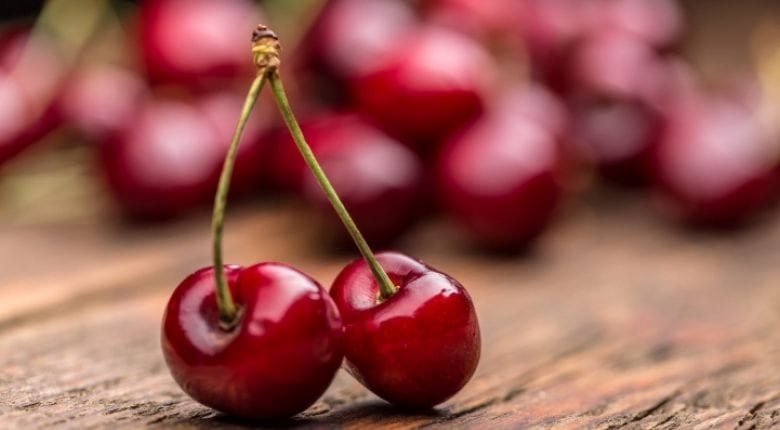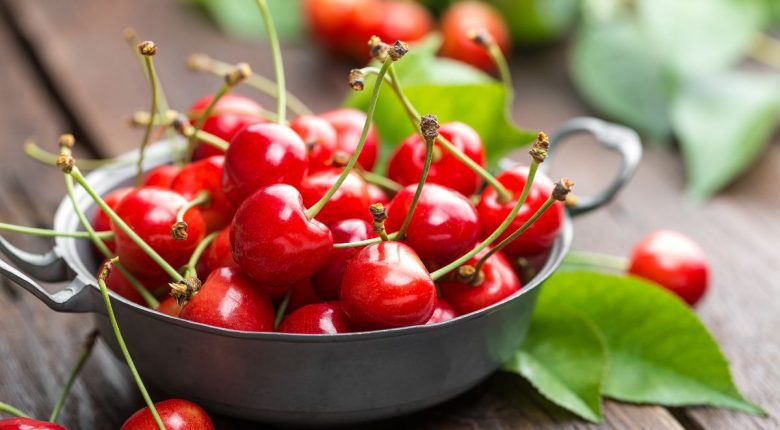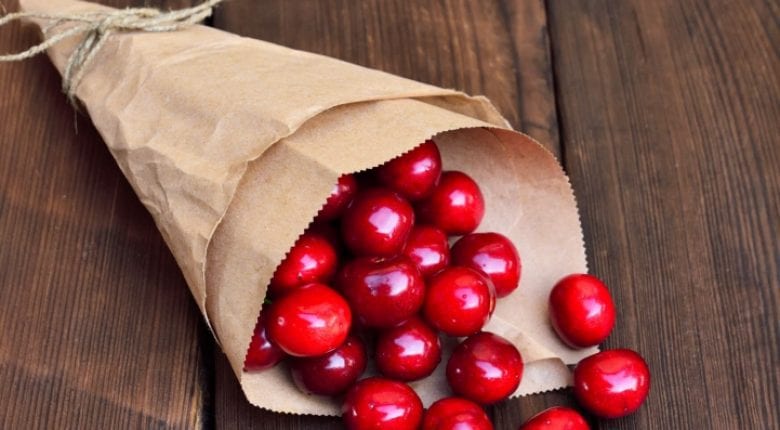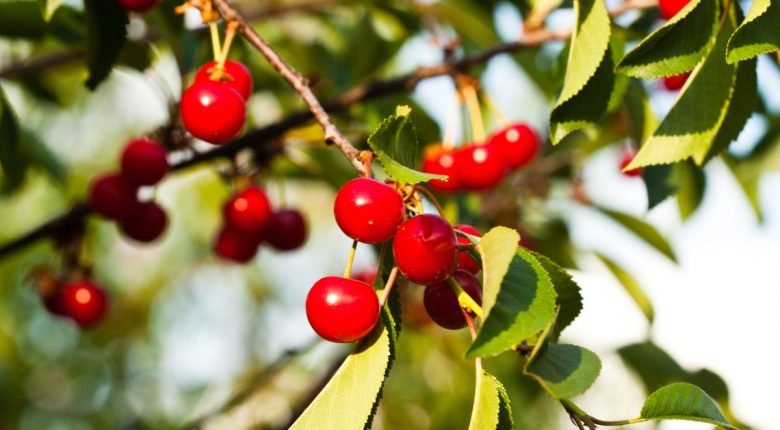Everything you need to know about cherries
There’s not a lot better than buying fresh cherries for the first time in the year. This summer shops and local farmers markets will start to sell cherries that are like nature’s very own sweets perfect for snacking on during hot days in the garden or out at a picnic.
Cherries are stone fruits and belong to the family of rosaceous plants. Since the 18th century, a distinction has been made between sweet and sour cherries. But there are further subgroups you may or may not have heard of!
Sweet cherries, for example, can be subdivided into white-heart cherries and heart cherries. Retailers prefer white-heart cherries to the softer heart cherries because of their firm flesh, which makes them easy to transport as well as store.
Cherries have stones, as the name stone fruit would suggest. The difference between stone fruit and pome fruit is that inside the stone fruit there is a single hard and stone-like core, whereas pome fruit has many small and softer seeds. Cherries do not grow without stones, but you can purchase de-stoners that come in use when enjoying these little red delights!

The origin:
Lot’s of people might assume this particular fruit originates from Germany or even the UK. However, the fruits originate from West Asia. People found the first cultivations on the Black Sea as early as the fourth century BC, which was a long time ago! Due to their immense popularity, they are now cultivated worldwide in the temperate climate zones. Major producers of sweet cherries include Turkey, the USA, Iran and Ukraine.
Here in the UK, the cherry industry has recently bounced back from near collapse. After suffering from cheap imports and high production and labour costs, the industry in Britain now produces around 6,500 tonnes of cherries. Because of this 50 year high in cherry produce major supermarkets now say they no longer need to import the fruit during the season to meet the British consumer demands.
The UK cherry season, which is notoriously short, begins in mid-June and lasts until mid-September.
Interestingly, by using dwarf rootstock, growers can produce smaller trees which are then housed and grown in plastic tunnels which creates a microclimate with temperatures akin to warmer places on the continent like the Mediterranean. Picking the fruit becomes more efficient too, as pickers no longer need ladders and can simply pick the trees on foot.
What are morello cherries?
Morello cherries are sour cherries with a shiny red or black-red colour. Farmers have been growing them in the UK for over 400 years, and they are perfect for cooking, making jams and preserves, as well as producing great-tasting liquors.
However, like many sour cherry varieties, morello cherries are not suitable for raw consumption. Not because they are poisonous, but because of their high acidity content that often leaves the taster grimacing! Interestingly, the fructose and mineral content are roughly the same for sweet and sour cherries.
If you do discover fresh sour cherries in the shops, don’t be afraid to process them yourself. In addition to preserving in alcohol or syrup, people also consider the sour fruit ideal for making jams and cold compotes.

Storage tips:
Sweet cherries are only harvested when fully ripe. Cherries do not ripen after harvesting, which is why they are called non-climacteric fruits. If cherries are picked too early, they can no longer develop their typical characteristics, such as aroma or texture, a bit like strawberries. Cherries spoil very quickly and are sensitive to pressure, so farmers send them to shops to be sold as quickly as possible once they are picked. Furthermore, the red fruit loses water quickly and become wrinkly. Therefore, we recommend consuming or processing cherries quickly after purchase. Fortunately, this isn’t usually a problem as they have a delicious sweet flavor.
To achieve maximum freshness, we have a few tips and tricks for you here:
You must store the fruit in a dry place to stop mould growing and wash them before eating but make sure you remove the stalk after washing!
A quick wash will help prevent germs from spreading and penetrating the skin of the fruit.
Your purchased cherries are best off in your fridge.
Due to the cool temperatures, the shelf life of the fruit is significantly extended: susceptibility to decay and microbial spoilage is slower here. In the vegetable compartment of the refrigerator, they keep for four to seven days, depending on their freshness. They keep even longer in BioFresh.
Please note that fresh sour cherries have a shorter shelf life than sweet cherries.
The sweet variant tastes best raw when they have reached room temperature. Try the crisp fruit in fruit salads, cakes or desserts. Sour cherries, on the other hand, are particularly delicious when cooked or baked.

Are they healthy?
Cherries are not only very tasty but also contain a lot of minerals. They have a particularly high potassium, calcium and iron content. Furthermore, the red, crisp and juicy fruit also contains a lot of vitamin C and almost all vitamins of the B group.
Cherries also contain anthocyanins. These are secondary plant substances which are responsible for the red skin colour of cherries. This means you can find them in exceptionally in dark varieties. Scientists say that anthocyanins have various beneficial effects in the human body, such as possessing anti-inflammatory and antioxidant properties.
It should not be forgotten, however, that cherries also contain high levels of fructose – which is why they are high in calories. But don’t worry – they are still healthier than ice cream and arguably just as enjoyable on a hot summers day!
Stomach ache myth:
There is an age-old rumour that cherries can cause stomach aches or that water should never be drunk with them. However, there is absolutely no scientific evidence for this. It may be that this myth originated in a time when water quality was much worse than it is today. One reason for slight pains after eating cherries could be the high fructose content. Bacteria in the large intestine break down the remaining fructose, which many people cannot absorb sufficiently in their small intestine, leading to the formation of gas that causes abdominal pain. As with other foods, it is advisable to enjoy them in moderation and listen to your body!
Do they burst on trees?
Sweet cherries, in particular, sometimes appear so firm and crunchy that one wonders why the fruit on the tree does not burst. This phenomenon does indeed occur, but farmers only experience it when they are actually about to harvest the cherries. A downpour can then become scary for the farmer.
The firm skin of the cherries protects the fruit from fungi and germs and allows a limited amount of water and other substances to escape from the inside of the fruit to the outside. At the beginning of fruit formation, the skin is still very thick but as the cherry grows and grows, only a crisp, thin skin remains. In the event of a downpour, water can now penetrate through small cracks in the skin into the interior of the fruit. This can lead to a process called osmosis: the concentration of fructose is, of course, much higher inside the cherry than on the outside. To compensate for the concentration disparity, the water flows into the interior, as the sugar molecules cannot escape. The cherry absorbs a lot of water, so it can happen that the fruit bursts.
The cherry tree – a magnificent flowering tree
The tree blossoms April to Make and gives off a brilliant white glow. To ensure that your tree rewards you with a rich harvest, it is very important to observe correct pruning, as with many types of fruit. Cherry trees are quite easy to care for if you follow a few tips. To ripen, they’ll need a lot of sunlight, so they ripen less well in the inner part of the crown if it is too dark there. Therefore, regularly remove the older parts of the tree, leaving young shoots in a favourable position. Then you can expect a rich cherry harvest!

What’s your favourite way to enjoy them? Tell us your favourite recipes in the comments or share this article on Facebook or Twitter.